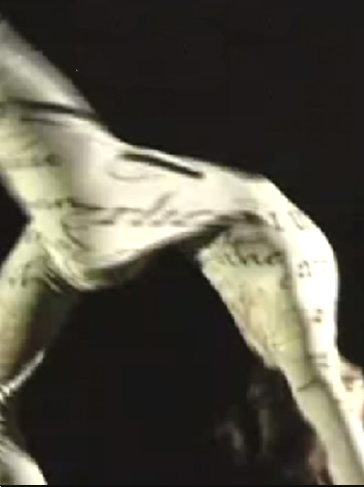|
|
|
|
克城消息
|
| |
|
|
Motion of the Writ: West Meets the East
|
|
 |
| |
|
|
| |
In collaboration between visual artist Kelly Young, owner of My
Gallery, and Mary Miller, of the Mary Miller Dance Company, the
Pittsburgh Center for the Arts' Artist Residency Program spins Motion
of the Writ: West Meets the East.
The work will be presented during the
Pittsburgh Center for the Arts’ Gallery opening on Friday, February 3,
2006, in Simmons Hall. Gallery doors open at 5:30 p.m. The Pittsburgh
Center for the Arts is located on the corner of Fifth and Shady
Avenues. Further information on the Center is available at
www.pittsburgharts.org.
Two short performances of Motion of the Writ: West Meets the
East will take place during the opening. The first performance will
begin at 6:00 p.m. and the second at 7:00 p.m. Fol-low-ing each
performance members of the audience will be invited to experience what
it feels like to be “inside the writing.” Each performance will also
be followed by discussions with the artists.
A small installation of some of Mr. Young’s visual art works
will be on display in Simmons Hall at this time. For more information
on Mr. Young, his work and his gallery please visit www.kellyyoung.us.
Both performances are free & open to the public.
Ms. Miller & Mr. Young share the belief that the
world’s diversity should be celebrated & shared. The melding of ideas
from two different cultures, creating a third entity, is both
interesting and timely. This work brings together visual
art/calligraphy and modern dance. Motion of the Writ: West
Meets the East is the projection of Mr. Young’s
calligraphy, both western alphabet and Chinese character, on a solo
dancer. The solo dancer, Ms. Emilia Zankina, in her seventh year with
the Mary Miller Dance Company, will be performing Ms. Miller’s
choreography created for this work.
There are many interesting aspects and layers to this work.
The most visual one is simply that the dancer’s movement can allow the
projections of the calligraphy – words, sentences, and paragraphs – to
be revealed completely, revealed in part, or not revealed at all.
Projection of the calligraphy upon the dancer’s moving body permits
linguistic communication to occur purely visually in varying degrees,
thus depending upon her movement. The shape the body takes while
dancing changes the audiences’ perspective by the amount of the
projection which is “captured” on the dancer’s body.
The projections create a pocket in which the dancer is
immersed. The dancer is inside the writing. The graceful calligraphy
from different cultures projected onto the movement of the modern
dancer makes the still calligraphy come alive. |
|
|
|
|

|
| |
| |
| |
|
|